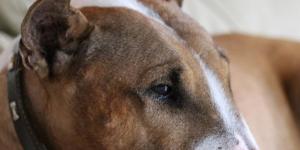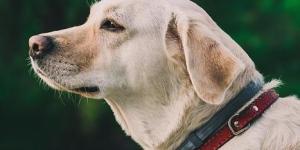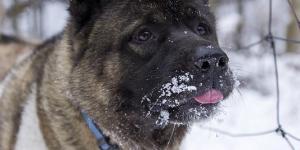Common Diseases of Persian Cats

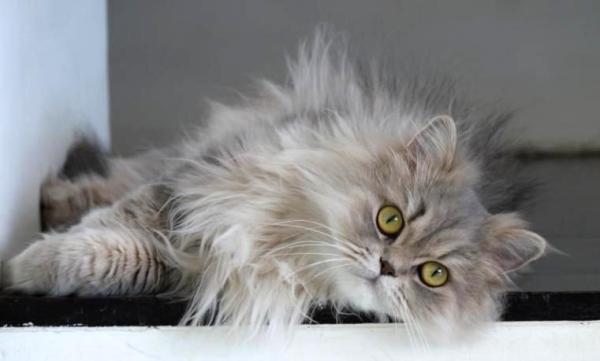

See files for Cats
The most common Persian cat health issues are related to their genetics. The selective breeding of Persian cats not only result in desirable physical traits such as long hair, they also limit their genetic diversity. Doing so means that certain conditions are passed on from one generation to another. Brachycephaly is one of the most obvious since it results in the characteristic flat nose of peke type Persian cat breeds. What is less obvious are the many health complications this can cause the Persian cat. Other Persian cat health issues are hereditary, but are not necessarily related to this problem.
At AnimalWised, we look at the common diseases of Persian cats. We provide information on the causes, symptoms and treatment of the most common Persian cat health issues, as well as what prevention methods are available to keep your Persian cat healthy.
Common health issues in Persian cats
Persian cats are a popular and beloved breed known for their luxurious long coats and distinctive facial features. However, they are also prone to certain health issues and have specific genetic characteristics that can impact their well-being. Here are some common diseases and health issues that affect Persian cats, along with their causes, symptoms, treatment, and preventive measures:
- Polycystic kidney disease (PKD)
- Brachycephalic airway syndrome
- Feline hereditary dermatitis (FHD)
- Eye conditions
- Trichobezoars (hairballs)
Below, we take a look at these individual Persian kitty health problems in more detail. Before we do, you may want to learn a little background with our article on the different types of Persian cats.
Polycystic Kidney Disease (PKD)
Polycystic Kidney Disease (PKD) is a hereditary condition that affects Persian cats more commonly than other breeds. It is characterized by the formation of multiple fluid-filled cysts in the kidneys, which gradually grow in size and compromise kidney function over time. Here's how PKD affects Persian cats:
- Causes: PKD in Persian cats is caused by a genetic mutation. The condition is inherited in an autosomal dominant pattern, which means that a cat only needs to inherit the PKD gene mutation from one parent to develop the disease. This genetic mutation disrupts the normal development and structure of the renal tubules, leading to the formation of cysts.
- Onset and progression: Persian cats with polycystic kidney disease usually develop cysts in the kidneys during fetal development or early in life. However, the cysts are typically small and do not cause significant clinical signs until later in life. As the cat ages, the cysts gradually increase in number and size, eventually replacing healthy kidney tissue and impairing the kidney's ability to function properly.
- Symptoms: the symptoms of PKD in Persian cats may vary depending on the severity and progression of the disease. In the early stages, cats may not show any noticeable signs. As the cysts enlarge and kidney function declines, common symptoms may include increased thirst (polydipsia), increased urination (polyuria), weight loss, decreased appetite, lethargy, and poor coat quality. In some cases, PKD can progress to kidney failure.
- Diagnosis: veterinarians can diagnose PKD in Persian cats through various diagnostic methods. The most reliable method is through ultrasound imaging of the kidneys, which allows visualization of the cysts. Ultrasound can detect the presence and size of cysts even before clinical signs appear. Genetic testing is also available to identify cats carrying the PKD gene mutation, which can be used for breeding purposes.
- Treatment and management: unfortunately, there is no cure for PKD in Persian cats. Treatment primarily focuses on managing the symptoms and slowing down the progression of the disease. This may involve supportive measures such as providing a special renal diet to reduce the workload on the kidneys, maintaining hydration, monitoring blood pressure, and managing any complications or secondary infections that may arise. Regular monitoring of kidney function through blood tests and urine analysis is essential to assess the progression of the disease and adjust the treatment plan accordingly.
It's important to note that PKD is a progressive condition and affected cats may experience a decline in kidney function over time. Therefore, early detection through regular veterinary check-ups and appropriate management strategies can help maintain the quality of life and extend the lifespan of Persian cats with PKD. Additionally, responsible breeding practices, such as genetic testing for the PKD mutation, can help reduce the prevalence of the disease in future generations of Persian cats.
Brachycephalic airway syndrome (BAS)
Brachycephalic airway syndrome (BAS) is a condition that can affect Persian cats, along with other brachycephalic or flat-faced cat breeds. The distinctive facial structure of Persian cats, characterized by a flattened face and shortened muzzle, predisposes them to certain anatomical abnormalities in their respiratory system. Here's how Brachycephalic Airway Syndrome can affect Persian cats:
- Causes: the primary cause of brachycephalic airway syndrome in Persian cats is the structural abnormalities in their respiratory system. These abnormalities include narrowed nostrils (stenotic nares), an elongated soft palate, and a smaller-than-normal trachea. These anatomical features restrict airflow and interfere with normal breathing.
Persian cats with brachycephalic airway syndrome may exhibit various respiratory symptoms, which can range in severity. These respiratory symptoms in cats often worsen during periods of physical exertion, stress, or in hot and humid environments. Common symptoms include:
- Difficulty breathing: Persian cats with BAS may struggle to breathe, especially when they engage in activities that require exertion or when they experience stress. They may exhibit noisy or labored breathing with audible wheezing or snorting sounds.
- Snoring: the structural abnormalities in their airways can lead to snoring sounds while the cat is asleep.
- Exercise intolerance: Persian cats with BAS may tire easily during physical activities and exhibit signs of fatigue or exhaustion.
- Heat intolerance: brachycephalic cats have a reduced ability to dissipate heat through panting, which makes them more susceptible to heat exhaustion or heat stroke in hot and humid conditions.
The management of brachycephalic airway syndrome in Persian cats aims to alleviate the symptoms and improve their quality of life. Treatment options may vary depending on the severity of the condition and can include:
- Weight management: maintaining a healthy weight is crucial for minimizing the impact of BAS. Obesity can exacerbate breathing difficulties in brachycephalic cats.
- Environmental modifications: avoid exposing Persian cats with BAS to extreme temperatures, especially hot and humid environments. Provide a cool and well-ventilated living environment.
- Surgical intervention: in some cases, surgical correction of specific anatomical abnormalities may be recommended. Procedures such as nares widening (rhinoplasty), soft palate shortening, or other corrective surgeries can help improve the airflow and reduce respiratory distress.
It's important to consult with a veterinarian experienced in brachycephalic breeds to diagnose and develop an appropriate treatment plan for Persian cats with brachycephalic airway Syndrome. Early detection, preventive measures and appropriate management strategies can significantly improve the overall well-being and quality of life for affected cats.
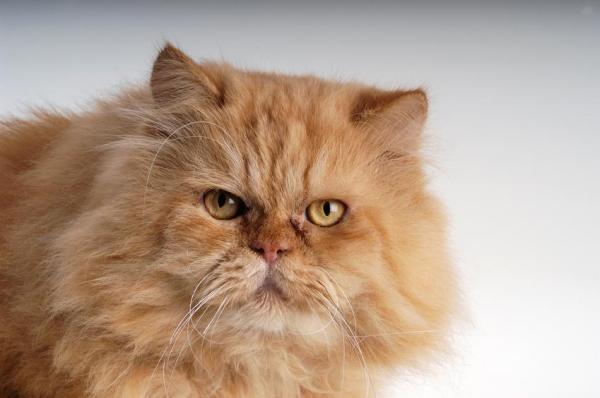
Feline hereditary dermatitis (FHD)
Feline hereditary dermatitis (FHD) is a genetic skin disorder that can affect Persian cats. It is characterized by excessive itching, inflammation, and the development of skin lesions.
FHD in Persian cats is caused by an inherited genetic mutation. The exact mechanism of how this mutation leads to dermatitis is not fully understood, but it is believed to disrupt the normal functioning of the skin's immune system and its ability to maintain a healthy barrier.
Persian cats with FHD may exhibit a range of symptoms, which can vary in severity. Common symptoms include:
- Excessive itching (pruritus): affected cats may scratch, bite, or lick themselves excessively, often leading to hair loss and skin damage.
- Inflammation: the skin may become red, swollen, and inflamed, especially in the areas where the cat scratches or irritates the skin.
- Skin lesions: FHD can lead to the development of various types of skin lesions, including redness, crusting, scaling, papules, pustules, and open sores.
- Secondary infections: due to the damaged skin barrier and constant scratching, affected cats are more prone to developing secondary bacterial or fungal infections.
The management and treatment of feline hereditary dermatitis in Persian cats aims to control symptoms, reduce inflammation and prevent secondary infections. Treatment options may include:
- Topical treatments: medications such as corticosteroids or antipruritic creams may be prescribed to relieve itching, reduce inflammation and promote skin healing. Learn more about one corticosteroid for felines with our article on prednisone for cats.
- Systemic medications: in more severe cases or when topical treatments are not sufficient, oral medications such as antihistamines, immune-modulating drugs or antibiotics may be prescribed to manage symptoms and prevent infections.
- Avoiding allergens: identifying and avoiding potential allergens, such as certain foods, environmental triggers, or parasites, can help minimize the occurrence or severity of flare-ups.
- Regular bathing: regular bathing with gentle, hypoallergenic shampoos can help soothe the skin, remove allergens, and prevent secondary infections. Learn how this is done with our guide to bathing a Persian cat.
Given that FHD is an inherited condition, genetic testing can be performed to identify cats carrying the genetic mutation associated with the disease. Responsible breeding practices, such as avoiding breeding cats with the mutation, can help reduce the incidence of FHD in future generations.
If you suspect your Persian cat may have feline hereditary dermatitis or any other skin conditions common to cats, it is important to consult with a veterinarian experienced in dermatology. They can perform a thorough examination, conduct necessary tests, and develop a tailored treatment plan to manage the condition and improve your cat's comfort and well-being.
Eye conditions
Persian cats are known for their striking and expressive eyes. However, they are prone to certain eye problems due to their breed characteristics and genetics. Here are some common eye problems that can affect Persian cats:
Eyelid and eyelash abnormalities
- Entropion: entropion in cats is a condition in which the eyelid rolls inward, causing the eyelashes to rub against the cornea. This can lead to irritation, redness, corneal ulcers, and potential vision impairment. Surgical correction may be necessary to reposition the eyelid.
- Ectopic cilia: ectopic cilia refers to the abnormal growth of eyelashes that emerge from an abnormal location on the eyelid. These misplaced eyelashes can cause discomfort, corneal ulcers, and other eye-related issues. Surgical removal of the ectopic cilia is often required.
Tear duct abnormalities
- Epiphora: Persian cats may have an increased production of tears or inadequate drainage due to abnormal tear duct anatomy. This can result in excessive tearing, wet fur around the eyes, and skin irritation. Treatment options may include topical medications, tear duct flushing, or surgical intervention to improve tear drainage.
Other eye problems in Persian cats
- Corneal ulcers: corneal ulcers can occur in Persian cats due to various factors such as entropion, ectopic cilia, or exposure to irritants. These ulcers are open sores on the surface of the cornea and can cause pain, redness, squinting, and discharge. Treatment typically involves topical medications, antibiotics to prevent infection, and addressing the underlying cause.
- Progressive retinal atrophy (PRA): PRA is a genetic condition that affects the retina, leading to progressive degeneration and eventual blindness. Persian cats have a higher prevalence of PRA compared to some other breeds. The onset of symptoms and progression of the disease may vary. Unfortunately, there is no specific treatment for PRA, and affected cats eventually experience complete or partial blindness.
- Cherry eye: cherry eye refers to the prolapse or protrusion of the third eyelid gland, resulting in a red, swollen mass in the corner of the eye. While it can affect any breed, Persian cats are occasionally prone to this condition. Surgical intervention is often necessary to reposition or remove the affected gland.
Eye problems
Also known as trichobezoars, hairballs are a common issue in Persian cats and many other long-haired cat breeds. Persian cats have a dense and luxurious coat that requires regular grooming. During self-grooming, they ingest a significant amount of loose hair.
Hairballs in cats can form when this ingested hair accumulates in the cat's stomach and forms a compact mass that cannot be easily passed through the digestive tract. Here's a brief explanation of hairballs in Persian cats:
- Ingestion of hair: Persian cats have long, fine hair that easily sheds. When they groom themselves, their rough tongues catch loose hairs, which are then swallowed. Over time, these hairs can accumulate in the cat's stomach.
- Hairball formation: as more hair is ingested and accumulates in the stomach, it can mix with food particles, mucus, and digestive juices. The hair begins to form a clump or ball, known as a hairball. The shape and size of hairballs can vary, and they can be cylindrical or cylindrical in shape.
The most common signs of hairballs in Persian cats include:
- Frequent coughing or gagging: this is often a result of the cat's attempts to expel the hairball through retching or vomiting.
- Lethargy: the presence of a hairball can cause discomfort and lead to decreased activity levels.
- Decreased appetite: if a hairball causes irritation in the stomach, it may result in a temporary loss of appetite.
- Constipation: in some cases, a hairball can obstruct the passage of feces, leading to constipation.
To help prevent and manage hairballs in Persian cats, the following measures can be taken:
- Regular grooming: frequent brushing helps to remove loose hair from the coat before the cat ingests it during self-grooming. This reduces the amount of hair swallowed and the formation of hairballs.
- Hairball-specific diets: some cat foods are formulated with special ingredients that help minimize hairball formation and aid in its passage through the digestive system. Consult with a veterinarian for recommendations.
- Laxatives or hairball remedies: these products can be used to lubricate the digestive tract and assist in the passage of hairballs. They are often available in paste or gel form and can be administered orally. One of the most common is malt paste for cats.
- Increased water intake: ensuring that your Persian cat has access to fresh water can help keep the digestive system hydrated, which may aid in the movement of hairballs through the intestines.
If a Persian cat exhibits persistent symptoms of hairballs or experiences complications such as vomiting, appetite loss, or prolonged constipation, it is essential to seek veterinary attention. A veterinarian can provide appropriate guidance and treatment options to manage the condition and improve the cat's comfort.
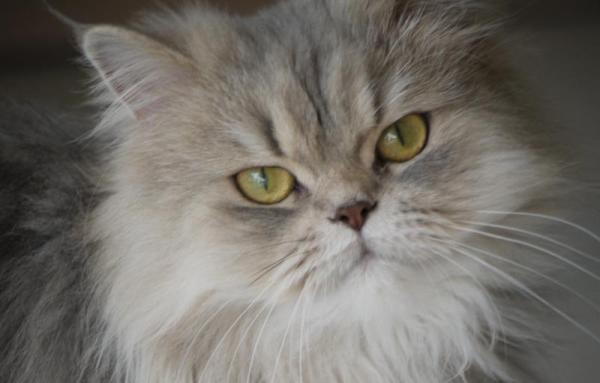
Less common diseases of Persian cats
These diseases and conditions are much rarer than the common ones described above, but your Persian cat is still at some risk of suffering from them.
- Oculocutaneous albinism: a recessive trait that causes a mild autosomal kind of albinism which affects the cat's fur, making it lighter than normal. The effects of this anomaly are more evident when the cat suffers from photophobia and is more sensitive to infections. The veterinarian should treat the symptoms. Here you can learn all about caring for an albino cat.
- Skin fold dermatitis: refers to irritation of the Persian cat's facial creases as a result of excessive tear overflow.
- Oily seborrhea: symptoms include scaly and/or greasy skin. Oily seborrhea should be treated by a veterinarian.
- Patellar luxation: causes lameness and prevents the cat from jumping without hesitation.
- Hip dysplasia:appears when the joint between the top of the femur and the socket of the hip fails. It causes lameness and pain when moving.
- Kidney stones:must be removed through surgery. 80% of obese Persian cats suffer from this ailment.
Learn some basic ways you can improve you Persian cat's health and well being with our article on caring for a Persian cat.

This article is purely informative. AnimalWised does not have the authority to prescribe any veterinary treatment or create a diagnosis. We invite you to take your pet to the veterinarian if they are suffering from any condition or pain.
If you want to read similar articles to Common Diseases of Persian Cats, we recommend you visit our Prevention category.

